#Javad Rouhi
Explore tagged Tumblr posts
Text
Una voce dell'Iran: avrei voluto un figlio per insegnargli cos'è il senso dell'umanità- di Saedeh Lorestani
A volte mi dico che invece di fare l’avvocato, dedicarmi alla scrittura, al teatro, al balletto o ad attività socio-culturali, avrei dovuto dare alla luce un bambino e insegnargli il senso più profondo dell’umanità. Insegnargli a non schiavizzare le persone e a rispettare la dignità. Gli avrei potuto parlare della bellezza di dire “ti amo” e dargli la possibilità di sperimentare l’amore e la…

View On WordPress
#hijab#Iran#Javad Rouhi#Mahsa Amini#repubblica islamica dell&039;Iran#Saedeh Lorestani#ultima edizione
0 notes
Link
The Tragic Case of Javad Rouhi and the Fight for Justice in Iran: As mentioned in the article this has to be one of the saddest news stories I have researched and written in a long time
0 notes
Text
There is not much News coming out of Iran.
@bellamonde @aftabkaran are not active. @edentheactivist 's Tumblr got deactivated. Previously, they used to post regular Updates regarding the situation and developments in Iran.
Probably Internet is completely shut down.
I hope all are alive and well.
Again, I will share the Names of people who were announced to be sentenced to Death, but were not at that time.
I request you to Reblog.
Mohammad Ejma
Mohammad Pasandian
Sajjadimannejad
Mehdisannefarshi
Hazharhamidi
Alirezakafaei
Miladarmoun
Elahe Mohammadi
Niloofar Hamedi
Shoaib Mir Baloch Zehi Rigi
Mohammad Ghobadloo
Mohammad Qobadloo
Ebrahim Naroui
Toomaj Salehi
Farnoush Esmi
Benjamin Gaffari
Mohammad Boroughani
Ayoub Jamal
Mohammad Soltani
Mojgan Valian Zadeh
Jalil Azizpour
Alan Veysi
Bahaledin Veysi
Javad Rouhi
Elham Modaressi
Ava Jahangiri
Paria Faramarzi
Shahin Samadpour
Hamid Gharehasanlou
Farzaneh Gharehasanlou
Manouchehr Mehman-Navaz
Akbar Ghafari
Ebrahim Rigi
Mohsen Rezazadeh Qaraqualou
Saman Yasin
Seyed Mohammad Hosseini
Parmida Mehdipour
Farhad Tahazadeh
Farzad Tahazadeh
Sahand Noor Mohammadzadeh
Mehdi Keshvari
Hossein Hajlou
Abol Fazl Mehri
Hossein Mohammadi
Raha Ajoudani
Arin Farzania
Armin Mehdi Shokrollahi
Amir Mehdi Jaffari
Mahan Sadrat
Saeed Shirazi
Hajar Hamidi
Reza Eslamdoost
Karvan Shahiparvaneh
Shahram Marouf-Moula
Saeed Yaghoubi
Saleh Mir Hashemi
Amir Nasr Azadani
Mohsen Sohrabi
Makan Davari
Majid Kazemi
Hassan Firouzi
Farnaz Alizadeh
Niloufar Shakeri
Soheila Hijab
Hasti Ofogh
Samaneh Fathi
Shaker Behrouz
Parham Parvari
Saman Sayeedi
Elham Shoukdar
Zahara Hamedani
Navab Ebrahimi
Keyvan Mohtadi
Ehsanpirbarnash
Poryajavaheri
Ebrahim Naroui
Mehdi Mohammadi Fard
Mansour Dahmardeh
Kambiz Khorvat
Arshia Takdastan
Vajihe Pari Zanganeh
Amirsartipi
Zahra Nabizadeh
Hossein Ekhtarian
Mohammad Ekhtarian
Amir Mohammad Jafari
Maryam Haqgou
Shahla Abdi
Women. Life. Freedom
Freedom for Iran
Please share.
Please reblog.
#Iran#Iranian Revolution#Women Life Freedom#Jin Jiyan Azadi#Zan Zendagi Azadi#Mahsa Amini#Jina Amini#Say her Name#Fereshteh Ahmadi#Nika Shakarami#Kian Pirfalak#Mohsen Shekari#Majid Reza Rahnavard#Mehdi Karami#Mohammad Hosseini#Say their Names#Remember their Names#Stop Executions In Iran#Release all prisoners in Iran#Help Iran#Save Iran#Free Iran#Freedom for Iran#UN#Useless Nations
239 notes
·
View notes
Text

By: Andrew Doyle
Published: Dec 12, 2023
Towards the end of Christopher Marlowe’s play Tamburlaine Part Two, our marauding anti-hero burns a copy of the Quran, along with other Islamic books, as a kind of audacious test. “Now, Mahomet,” he cries, “if thou have any power, come down thyself and work a miracle.” Two scenes later, he is dead.
We might see this as a cautionary tale for our times. After all, it isn’t only Turco-Mongol conquerors who find themselves punished for Quran-burning. Last week, the Danish parliament voted to ban the desecration of all religious texts following a spate of protests in which copies of the Qur’an had been destroyed. Inevitably, the new law has been couched as a safety measure. This burning of the book, claims justice minister Peter Hummelgaard, “harms Denmark and Danish interests, and risks harming the security of Danes abroad and here at home”.
He has a point. Even unconfirmed accusations of Quran-burning can be sufficient to prompt extremist violence. In 2015, being accused of defiling the holy book, Farkhunda Malikzada was beaten to death by a ferocious mob in Afghanistan while bystanders, including police officers, did nothing to intervene. Many filmed the brutal murder on their phones and the footage was widely shared on social media. In 2022, a mentally unstable man called Mushtaq Rajput was similarly accused and tied to a tree and stoned to death in Pakistan. Earlier this year in Iran, it was reported that Javad Rouhi was tortured so severely that he could no longer speak or walk. He was sentenced to death for apostasy and later died in prison under suspicious circumstances.
But while we might anticipate that the desecration of the Quran would be proscribed in Islamic theocracies, it is troubling to see similar laws being passed in secular nations such as Denmark. The government had not been so faint-hearted when faced with similar problems in 2005. After cartoons of the Prophet Mohammed were published in Jyllands-Posten, a global campaign from Indonesia to Bosnia demanded that the Danish authorities take action. The government stood firm and the judicial complaint against the newspaper was dismissed.
In a free society this is the only justifiable response, albeit one that takes considerable courage. And the climate of intimidation that has descended since is a product of our collective failure to defend freedom of speech against the demands of militants. When the Ayatollah Khomeini pronounced his fatwa on Salman Rushdie for his novel The Satanic Verses, one would have hoped for a unified front on behalf of one of our finest writers. Instead, much of the literary and political establishment abandoned or even censured him. In the Australian television show Hypotheticals, the singer Yusuf Islam, formerly known as Cat Stevens, implied that he would have no objections to Rushdie being burned alive.
That a work of fiction such as The Satanic Verses could not even be published today gives us some indication of the extent to which we have forsaken the principle of free speech. If we are so squeamish about the burning of Qurans, why were so many of us indifferent to the burning of Rushdie’s book on the streets of Bolton and Bradford? Yusuf Islam’s remark about the author’s immolation might have been flippant but, as Heinrich Heine famously wrote: “Where they burn books, they will in the end burn people too.”
The ceremonial burning of books in Germany and Austria in the Thirties has ensured that the act will always have a unique charge, and a disquieting, visceral effect. It is why, for instance, the most memorable scene in Mervyn Peake’s Titus Groan is when the villain Steerpike sets fire to his master’s library. It is a gesture designed to repudiate the very heights of human achievement, to hurl his victim into a spiral of despair. When Rushdie saw his own novel publicly incinerated, he confessed to feeling that “now the victory of the Enlightenment was looking temporary, reversible”.
The burning of the Quran leaves many of us similarly troubled. We do not need to approve of the contents to sense that the destruction of a book is symbolic of a desire to limit the scope of human thought. When activists post footage of themselves gleefully setting fire to copies of Harry Potter, one cannot shake the similar suspicion that they would happily substitute the books with the author herself.
But while many of us find the burning of books instinctively rebarbative, to outlaw this form of protest is essentially authoritarian. And to reinstate blasphemy laws by specifying that only religious books are to be protected is fundamentally retrograde. Of course, such laws already exist in most Western countries in an unwritten form. In March, a 14-year-old autistic boy was suspended from his school in Wakefield, reported to the police, and received death threats after he accidentally dropped a copy of the Quran on the floor, causing some of the pages to be scuffed. He may not have committed a crime, but many people behaved as though he had.
And the same unwritten laws are in force in the fact that few would be brave enough to publish cartoons of the Prophet Mohammed after the massacre at the offices of French satirical magazine Charlie Hebdo in 2015. Five years later, the schoolteacher Samuel Paty was beheaded on the streets of Paris simply for showing the offending images during a lesson on free speech. Closer to home, a teacher at Batley Grammar School in West Yorkshire is still in hiding after showing the images to his pupils and stirring the ire of a righteous mob.
The failure of the school’s headmaster, as well as the teaching unions, to support this man against the demands of religious fundamentalists is revealing. Why must those who claim to be defending the dignity of Muslims treat them as irascible children? At the same time, as Sam Harris recently pointed out, there is an oddity in the fact that so many Muslims do not appear to be alarmed that “their community is so uniquely combustible”.
The bitter reality is that terrorism works, particularly when so many governments across the Western world are seemingly willing to fritter away our bedrock of liberal values. This has been actuated, in part, by an alliance of two very different forms of authoritarianism: ultra-conservative Islamic dogma and the safetyist ideology of “wokeness”. The latter has always claimed that causing offence is a form of violence, and the former has been quick to adopt the same tactics. This is why protesters outside Batley Grammar School asserted that the display of offensive cartoons was a “safeguarding” issue, and the Muslim Council of Britain criticised the school for not maintaining an “inclusive space”. The same censorious instincts have been updated, and are now cloaked in a more modish language.
In a civilised and pluralistic society, the burning of a holy book might provoke a variety of responses — anger, disbelief, or just a shrug of the shoulders — but it should never lead to violence. Back when The Onion still had some bite, the website satirised this “unique combustibility” through the depiction of a graphic sexual foursome between Moses, Jesus, Ganesha and Buddha. The headline said it all: “No One Murdered Because Of This Image”.
Freedom of speech and expression still matters, and if that means a few hotheads and mini-Tamburlaines might burn their copies of the Quran then so be it. It is unfortunate that we have reached the point where Islam must be ring-fenced from ridicule or criticism, whether due to fear of violent repercussions or a misguided and patronising effort to promote social justice. But for this state of affairs we ultimately have only ourselves to blame, and in particular our tendency to capitulate to religious zealots when they seek exemption from the liberal consensus.
==
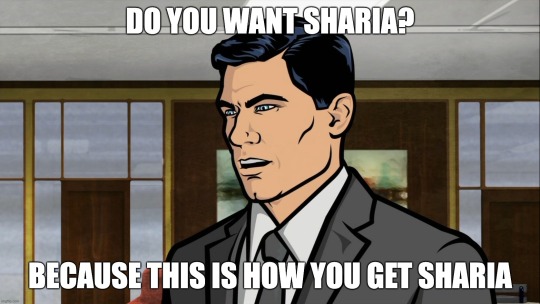
#Andrew Doyle#blasphemy#blasphemy laws#quran burning#quran#islam#islamic authoritarianism#authtoritarianism#i'm offended#offended#religious authoritarianism#free speech#freedom of speech#freedom of expression#criticism of islam#religion#religion is a mental illness
12 notes
·
View notes
Link
Javad Rouhi's death sentence was overturned, but he died in jail while his case was being reviewed.
0 notes
Text
🚨🚨URGENT: DISABLED PROTESTER IN IRAN FACING IMMINENT EXECUTION🚨🚨
As if the stories of the prisoners in Iran weren't already messed up, infuriating, and heartbreaking, here's yet another horrific story about another protester in Iran who can be executed at any moment. Thirty-five-year-old Javad Rouhi of Iran's Mazandaran province has a history of mental illness, and he's been tortured so horribly that he's lost the ability to speak and walk and also suffers from urinary incontinence. While this stuff is hard to predict, the fact that his death sentence was issued on January 3 means that he can be executed any day now, and we must do whatever we can, even if it's just spreading his name, in order to help.
Say his name to save his life, and please pray for him and his family.
#stop executions in iran#iran protests#iran protests 2022#free iran#freedom for iran#woman life freedom#women life freedom#javad rouhi
1 note
·
View note
Text
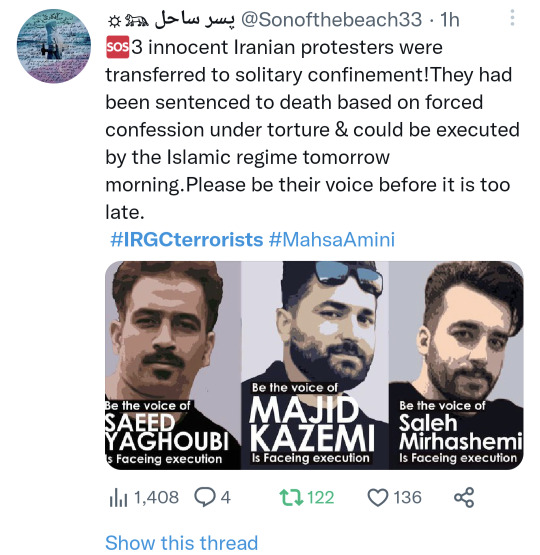

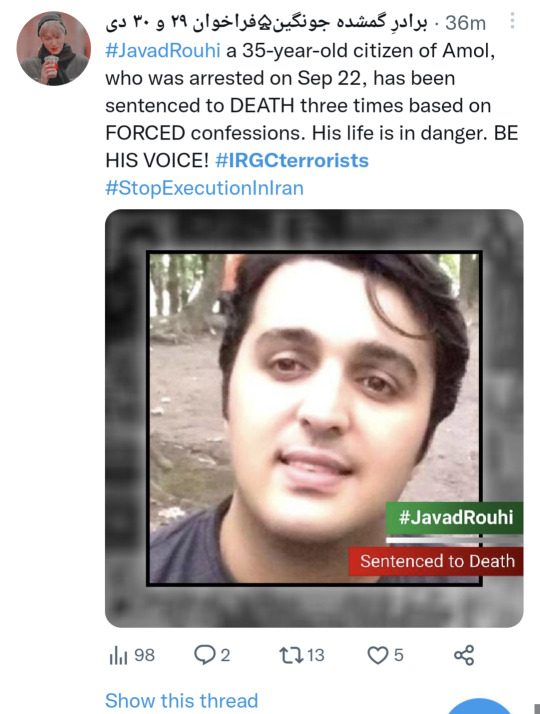
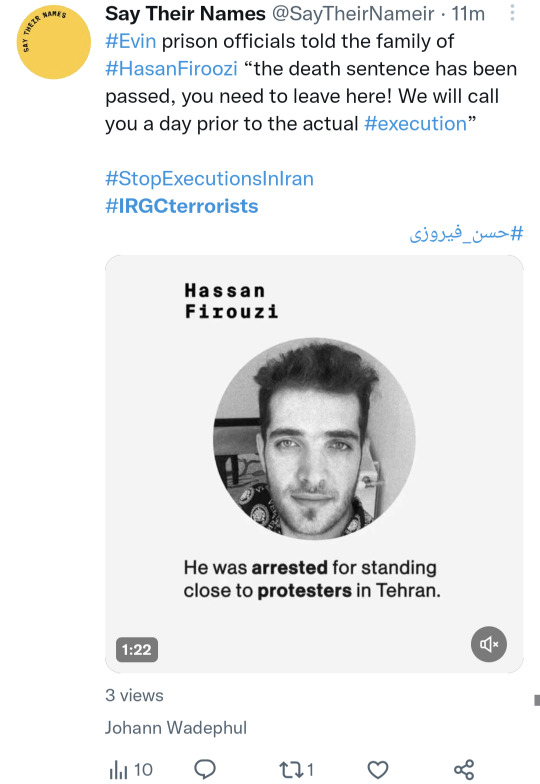
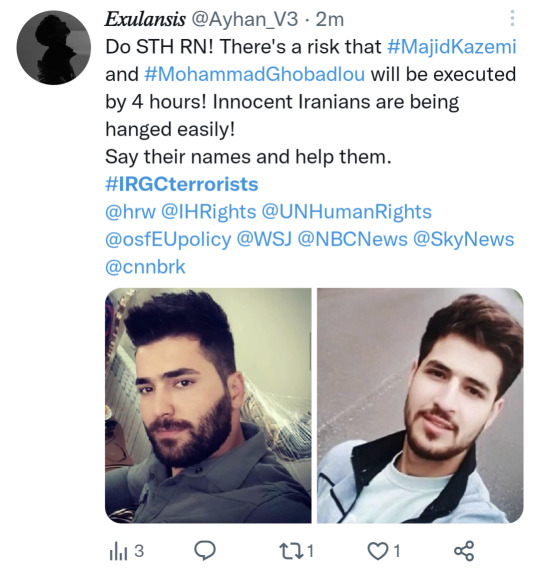

Saeed Yaghoubi
Majid Kazemi
Saleh Mirhashemi
Manoochehr Mehmannavaz
Javad Rouhi
Hassan Firouzi
Mohammad Ghobadlou
Noushafarin Rahimi
Be their voice, stop executions in Iran, and make sure the European Parliament KNOWS to declare the IRGC a terrorist organization.
14 notes
·
View notes
Text
ZAV Architects creates colourful domed cultural retreat on Iranian island of Hormuz
Iranian practice ZAV Architects drew on the colourful landscape of the island of Hormuz for this holiday community that is housed in around 200 brightly coloured domes overlooking the Persian Gulf.
Described by ZAV Architects as a "cultural residence", the group of buildings is located around five miles from the main town on the Iranian island of Hormuz.
The domed accommodation was designed to encourage tourists to visit the island while being an alternative to standard high-rise holiday apartments.
ZAV Architects designed the colourful holiday accommodation on Hormuz
"Presence in Hormuz intends to bring visitors to the forgotten island of Hormuz in order to increase the national and local GDP (gross domestic product) with the help of architecture," explained the studio.
"Often the answer of architecture to designing accommodation by the seaside is a tall elevated structure that overlooks the surrounding landscape," it continued.
"This project scales down a larger development into a multitude of smaller spatial units, forming a field of colonies that interlace in a fluid fabric similar to that of a neighbourhood."
Around 200 brightly coloured domes contain holiday homes and facilities
In total, the development contains 15 holiday homes that occupy multiple interconnected domes of varying sizes. These structures stand alongside other interconnected-domed buildings that contain restaurants, cafes, souvenir shops, tourist information and reception areas.
ZAV Architects arranged the domes closely together to create a sense of community and give the development a distinctive outline that was drawn from the island's natural forms.
The domes were informed by the islands geography and colours
"The domes have several types and sizes in their arches, which combined create a skyline matching that of the island of Hormuz which was studied thoroughly in our work," said the studio.
"As the project is located in an open area a few kilometres away from the city, its spatial compartments, domes of different colours and sizes, create a skyline topography that matches itself to the colourful landscapes of the island."
Interconnected domes contain holiday residences
All of the domes in development have been painted in bright shades of red, yellow, blue and green to give the community a colourful exterior.
This bold use of colour continues inside the structures, where the interior walls are painted in matching shades and furniture is coloured red, yellow, blue and green to match.
The residences have colourful interiors
"You cannot remove colour from the island of Hormuz – its coloured sand beaches change even the colour of the blue sea, nor of its people, for whom colour is an important mean of expression be it in their clothing, the interior of their houses, or even their food," said the studio.
"The colours surrounding us in Hormuz gave us the courage to be bold like the island."
Furniture is also brightly coloured
Each of the domes was constructed using a low-tech method with a structure made of stacked sandbags, which were filled with soil and sand dredged from Hormuz dock. The sandbags forms were supported with steel and finished with cement.
According to the studio, construction method meant that the buildings could be largely completed by people in the local community.
Furniture is coloured yellow, red, blue and green
"It is built with low-tech construction methods which makes possible the contribution of unskilled workers possible, they all became trained masters and operators after work was due and continue to collaborate in projects inside and outside the island," said the studio.
"There are upcoming programs in a community and learning centre where people can improve their hospitality skills as well."
Larger domes contain facilities like restaurants
ZAV Architects hopes that the project will contribute to increasing tourism and supporting the local community on the island.
"Architecture is a medium for creating and spreading a sensibility that reconsiders the conventional ways of seeing the status quo, in order to move towards change and improvement," said the studio.
The multicoloured domes overlook the sea
"Architecture is a platform for changing the world and its mission is to spark innovation," it continued.
To do so it needs to design processes rather than objects because processes can take a project to places one cannot predict or imagine at the beginning of the work. So we constantly seek to bring architecture out of its comfort zone."
The accommodation has views across the Persian Gulf
ZAV Architects is a Tehran-based architecture studio.
It previously designed The Rong Cultural Centre on the island of Hormuz, which was named Cultural project of the year at Dezeen Awards 2019.
Photography is by Tahmineh Monzavi, Soroush Majidi and Payman Barkhordari.
Project credits:
Owner: Ali Rezvani Client: Ehsan Rasoulof Structural design: Behrang Baniadam, Rouhi Touski Civil engineering: Farhad Beigi Electrical engineering: Pejman Moradian Mechanical engineering: Saeid Afsharian Culinary manufacturer: Matbakh Ara Environment consultant: Salman Rasouli, Roya Yazdizadeh Accommodation consultant: Nasim Mosavar Project constructor: Amir Tehrani Nobahari Construction manager: Hormat Ghasemi Construction vice-manager: Ramin Koulaghani, Amin Timas Mechanical constructor: Javad Irandegani, Hamid Haji Posht-e-Gol Floor constructor: Davoud Etemadi Fenestration builder: Mehra Company Interior plaster: Gholamali Abbasi Exterior plaster: Esmaeil Salimi Construction painter: Farzad Moharami Logistics: Nabiollah Timas, Borhan Pouyan, Ali Ghanbari, Ayoub Owj Hormozi, Khalil Owj Hormozi, Abdolhamid Hormozi, Davoud Hormozi, Ali Ghalandari Zehi, Farhad Shadan, Assad Gedri, Abbas Gedri, Ali Ghazi, Majid Bazmandeh, Ali Nasernia, Rahmat Ghalandari, Davoud Mohtaji, Morteza Mohtaji, Mohammad Vahedi, Mosayeb Zarei, Kambiz Naroui, Yasser Naroui, Nassir Narouii, Din Mohammad Naroui, Mojtaba Farhadi, Abbas Nasaji, Esfandiar Khorshidi, Khoubyar Khorshidi, Jalal Bameri, Ghassem Bameri, Enayat Karami, Reza Amirian, Eshgh Ali, Nabi Akrami, Mohammad Moallemi, Sajad Gholampour, Seyfollah Rasouli, Ali Golzari, Soheil Khedmatkari, Hosein Zohouri
The post ZAV Architects creates colourful domed cultural retreat on Iranian island of Hormuz appeared first on Dezeen.
0 notes
Text
There is not much News coming out of Iran.
Probably Internet is completely shut down.
I will share the Names of people who were announced to be sentenced to Death, but were not at that time. I hope all of them are alive and well.
I request you to Reblog these Names. Please share.
Mohammad Ejma
Mohammad Pasandian
Sajjadimannejad
Mehdisannefarshi
Hazharhamidi
Alirezakafaei
Miladarmoun
Elahe Mohammadi
Niloofar Hamedi
Shoaib Mir Baloch Zehi Rigi
Mohammad Ghobadloo
Mohammad Qobadloo
Ebrahim Naroui
Toomaj Salehi
Farnoush Esmi
Benjamin Gaffari
Mohammad Boroughani
Ayoub Jamal
Mohammad Soltani
Mojgan Valian Zadeh
Jalil Azizpour
Alan Veysi
Bahaledin Veysi
Javad Rouhi
Elham Modaressi
Ava Jahangiri
Paria Faramarzi
Shahin Samadpour
Hamid Gharehasanlou
Farzaneh Gharehasanlou
Manouchehr Mehman-Navaz
Akbar Ghafari
Ebrahim Rigi
Mohsen Rezazadeh Qaraqualou
Saman Yasin
Seyed Mohammad Hosseini
Parmida Mehdipour
Farhad Tahazadeh
Farzad Tahazadeh
Sahand Noor Mohammadzadeh
Mehdi Keshvari
Hossein Hajlou
Abol Fazl Mehri
Hossein Mohammadi
Raha Ajoudani
Arin Farzania
Armin Mehdi Shokrollahi
Amir Mehdi Jaffari
Mahan Sadrat
Saeed Shirazi
Hajar Hamidi
Reza Eslamdoost
Karvan Shahiparvaneh
Shahram Marouf-Moula
Saeed Yaghoubi
Saleh Mir Hashemi
Amir Nasr Azadani
Mohsen Sohrabi
Makan Davari
Majid Kazemi
Hassan Firouzi
Farnaz Alizadeh
Niloufar Shakeri
Soheila Hijab
Hasti Ofogh
Samaneh Fathi
Shaker Behrouz
Parham Parvari
Saman Sayeedi
Elham Shoukdar
Zahara Hamedani
Navab Ebrahimi
Keyvan Mohtadi
Ehsanpirbarnash
Poryajavaheri
Ebrahim Naroui
Mehdi Mohammadi Fard
Mansour Dahmardeh
Kambiz Khorvat
Arshia Takdastan
Vajihe Pari Zanganeh
Amirsartipi
Zahra Nabizadeh
Hossein Ekhtarian
Mohammad Ekhtarian
Amir Mohammad Jafari
Maryam Haqgou
Shahla Abdi
-
I request you to reblog and share.
Women. Life. Freedom.
Freedom for Iran
#Iran#Iranian Revolution#Women Life Freedom#Jin Jiyan Azadi#Zan Zendagi Azadi#Mahsa Amini#Jina Amini#Say her Name#Yalda Aghafzali#Mohsen Shekari#Majid Reza Rahnavard#Mehdi Karami#Azadi Karami#Mohammed Hosseini#Say his Name#Say their Names#Remember their Names#Stop Executions in Iran#Release all Prisoners in Iran#Women's Rights#Human Rights#Human Rights Violations#Help Iran#Save Iran#Free Iran#Freedom for Iran#Share Awareness#Share
44 notes
·
View notes